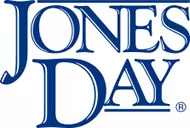FRS17
FRS17 is a reporting standard for both final salary and money purchase pension schemes but the substantial changes from the previous accounting rules (under SSAP24) are largely in relation to final salary schemes. The most substantial changes are as follows:
(i) The difference between the liabilities and assets of the pension scheme is calculated as at the balance sheet date and is added as either an asset or liability into the balance sheet of the company. In the first year, this will be balanced by an entry in the balance sheet reserves. The major effect of this is that it will influence the total and net asset figures for the company. If the scheme is deemed to be in surplus, the asset sum will increase. If the scheme is deemed to be in deficit, the asset sum will fall. At this stage, there is no effect on the profit and loss account.
(ii) In subsequent years, the year on year change in the surplus or deficit in the pension scheme will be accounted for by a corresponding change in the balance sheet asset or liability. Some factors in thatchange will be matched by an entry in the statement of total recognised gains and losses and others by an entry in the profit and loss account.
(iii) If a major change occurs to the defined benefits scheme, such as it closing for future accrual or losing a substantial number of current members, this will be shown in full through the profit and loss account.
Problems with FRS17
A number of issues have been raised with FRS17 which have yet to be resolved:
(a) Are increases to profits distributable?
It is not clear whether increses to profits as a result of positive changes on a year on year basis to the surplus or deficit in the scheme would be considered distributable for the purposes of dividends. There are strong arguments why this would not be so as the change hardly represents an increase in company funds but this has yet to be resolved and is unlikely to be so before FRS17 is fully implemented.
(b) Volatility
Pension schemes generally value their assets differently from companies. The assets are held for long term gain and short term volatility is not of relevance to the eventual ability of the assets to cover the liabilities. However, in keeping with the rest of the accounts, market value of assets will be used for calculating deficits and surpluses under FRS17. This has led many critics to point out that it will show unusual levels of volatility. The use of the
statement of total recognised gains and losses will protect the profit and loss account from some of this volatility but the balance sheet is still vulnerable. For instance, a company whose balance sheet date falls just after a stock market crash will be in a very different position from one whose balance sheet date falls a few days earlier.
(c) Relative size of pension funds
The assets of pension schemes open to most employees in the company are quite substantial. Whereas the volatility of a small number of investments should not unduly affect the balance sheet, a small shift in the stock market could have a disproportionately large effect on the balance sheet of a company with few assets but a large pension scheme. Financial covenants may be put in jeopardy because of the effects of FRS17.
(d) Scheme ownership
The assets and liabilities of a pension scheme do not correspond directly to assets or liabilities of a company. The company has obligations in relation to a pension scheme and those obligations are to maintain its ongoing health. However, unlike long term debt, the company will not necessarily be obliged to put in extra funds to an unhealthy scheme should markets improve. The liability in the scheme is not automatically a debt on the employer. Conversely, any surplus in a scheme does not belong to the employer and the employer can only obtain it subject to the rules of the scheme, the position of members, the views of the trustees, and a tax payment to the Inland Revenue. FRS17 takes account of this only to some extent in the recognition of the surplus on the balance sheet, but it can paint a misleadingly healthy or unhealthy view of the company’s balance sheet.
The future
The Accounting Standards Board have vehemently defended FRS17 in its entirety and have pointed out that it is being blamed for problems that already existed in pension schemes. However, there is no doubt that it may have disproportionate effects on company balance sheets and it needs careful review when analysing accounts, particularly when looking at net asset valuations of companies and financial covenants on credit agreements.
The content of this article does not constitute legal advice and should not be relied on in that way. Specific advice should be sought about your specific circumstances.

